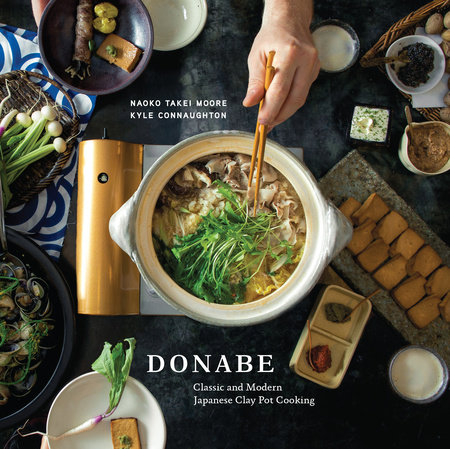Emiko Davies, the Australian-Japanese cookbook author based in Italy, is mostly known for her Italian cooking. She’s written five books on Italian cooking, and I recognize her name from the work she’s done for Food52. My introduction to her was a Food52 Youtube video in the days of the covid-19 pandemic where she made Torta Caprese. But more recently, in September 2023, she release a Japanese cookbook with Smith Street Books.

“Gohan”, by Davies, almost feels like looking through a family photo album. At first glance, the recipes are unpretentious and ageless. Here, you’ll find basic Japanese cooking and flavors.
The book is divided into:
- Home-made pantry staples
- Rice
- Noodles and street food
- The West meets Japan
- Japanese Breakfast
- Vegetables
- Family favorites
- Sweets
When I say basic Japanese cooking, I mean items like onigiri (rice balls) and grilled fish. It’s humble, and not glitzy for internet fame. You can also find recipes like:
- No-waste furikake seasoning
- All-purpose soup base
- Tonkatsu sauce
- Pickled ginger
- My mother’s lemon-pickled daikon
- Scrambled eggs with garlic chives
- Salmon donburi
- Fried and braised lotus root and carrot
- Golden taro and potatoes in soy butter
- Cold somen noodles with cucumber and ginger
- Winter hotpot (oden)
- Potato salad
- Curry rice
- Japanese milk bread
- Red bean buns
- Kanten fruit jelly cups
The first recipe I made from the book was for braised tofu. The ingredient list is uncomplicated: firm tofu, onion, scallion, soy sauce, mirin, sake, sugar, and water. The results were pretty much what I imagined they would be. It’s a simple but tasty way to consume tofu. (Typically you would serve with rice, but I must admit that I ate with broccoli and pasta instead.) I will definitely remake in the future.
The other recipe I made was for kinako and chestnut cake. It’s made with lots of butter, sugar, Okinawan black sugar (alternately brown sugar), lots of eggs, all purpose flour, kinako (aka roasted soybean powder), and whole chestnuts. For the chestnuts, I cheated and used one 100g bag of roasted chestnuts from the market. I adore chestnuts but I don’t really eat them in other dishes, so I was curious how this dessert would turn out. I’ve also never thought about using kinako in baked goods. I’ve only used it as a condiment for Korean BBQ. This recipe ended up being surprisingly difficult for me. I probably should have stayed away when I realized that there were no leavening agents. All of the loft is made from the eggs (which I am generally not great at). I followed the recipe to the T, making sure that the wet ingredients were well mixed with an electric mixer and timed it. But the batter is extremely thick and sticky, almost more like a cookie batter than like a cake batter. By the time I folded in all of the flour, I worked out too much air from the eggs.
My cake still rose, but not much, and I ended up with a fairly dense crumb. But more importantly, how was the flavor? It was not at all what I was expecting, but at the same time, it is the epitome of a Japanese dessert. (I know that’s a terrible description.) It’s not too sweet, and it’s very light in flavor. I’m not sure I’d make it as written again. Next time, I will give in to the temptation to add some baking powder. I might also add some vanilla, or alter the sugar ratio for more brown sugar (I do not have black sugar in my pantry). I’m not sure. It’s probably the American in me, but I wanted just a bit more oomph (especially for the amount of effort).
Baking technicalities aside, I’m glad I made it. A more talented home baker will not have trouble with it. (Or do I remake it as written just to prove to myself that I can do it? Hmmm…) I wish a little that I made the matcha almond cookies recipe instead. I didn’t choose that one because my matcha powder is old and the bright green color has oxidized into a dull green.
I think anyone who appreciates Japanese food will enjoy this book. I think the photos are gorgeous, and there are lovely stories and ingredient information. My only caution is that this book is in weighed amounts, no US volumetric.
Disclaimer – I kindly received a copy of this book from Smith Street Books/Rizzoli New York for this review. I’m not getting paid for this post. The views and opinions expressed are purely my own. This cookbook is available for purchase from your favorite bookshops.
Reference Links:
https://food52.com/users/23872-emiko/articles



